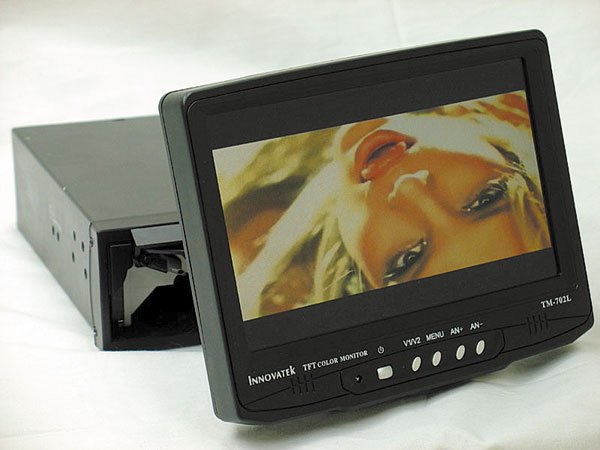Gabriel Nu
ñez presses a button on his key fob and outside, in the parking
lot just off of busy San Benito Street, the sound of cars zipping
by is interrupted by the growl of a green Dodge Durango rumbling to
life.
Gabriel Nuñez presses a button on his key fob and outside, in the parking lot just off of busy San Benito Street, the sound of cars zipping by is interrupted by the growl of a green Dodge Durango rumbling to life.
He doesn’t need the remote start as much during the long days of spring and summer, but during the winter, he’s programmed this fob to fire up the truck and turn on its headlights, casting a glow across the unlit parking lot so his crew can find their door handles and start homeward.
Like Nuñez, president of Hollister Auto Stereo, most car owners in the South Valley who make aftermarket alterations to their rides do so for practical reasons.
They add alarms for security, immobilizing switches to protect against theft or exhaust systems and air filters for improved fuel economy.
The largest consumer group for these types of aftermarket installations is the married with children set, or drivers ages 35 to 44, whose primary motivation is “protecting the investment” of a car, according to the research firm Mintel, an information supplier for blue chip companies in the United States and England.
But beyond these basic installations, there is a thriving industry revolving around entertainment and aesthetically based aftermarket components.
Young men in the 18- to 34-year-old range are major drivers in this aftermarket aesthetic boom, according to the Mintel report “Automotive Aftermarket: Accessories and Specialty Products – US.”
These young men are most likely to want the luxury options they see on shows like Spike TV’s “Trucks!” and MTV’s “Pimp My Ride,” like specialty body work, paint, graphics, lighting and entertainment, according to the survey.
However, these gents are least likely to be able to afford such costs up front. Aftermarket devices allow them to purchase these luxuries incrementally instead, the report found.
In Nuñez’s shop, one of the most popular items these days is a touchscreen AM/FM/CD/DVD/Navigation system the size of a radio. With the touch of a button, its flat surface slides forward, growing like something out of the movie “Aliens” until it folds up to reveal the smooth screen of menu options.
“They can program it and say, ‘I want to go this place,’ and it’ll take them up to the doorstep,” said Nuñez, who installs two or three of the systems per month at around $2,000 a piece.
The DVD portion of the player is considered a distraction, so installers do take measures to limit its use, said Emil Visperas a salesman at Gilroy’s Best Buy.
“We install them to where you can only watch them when you have the e-brake up,” said Visperas.
Installations of strict DVD players are even more frequent, though in the South Valley it’s not young men who are doing the buying. Families are the major consumers for multimedia installations, said Nuñez, who said most younger men opt for pounding stereo systems instead. But families aren’t going bare-bones when it comes to media kits for their cars.
Nuñez frequently gets requests from customers for multiple screens in a car, not all of which show the same thing.
One recent customer had four screens put in to entertain her children on longer car rides.
There are two DVD players, a VHS player and a video game console, all hooked to their own monitors to allow each child to perform his or her preferred activity.
Most people in the area don’t request the flashy screens in back-seat headrests and other showy touches, according to Nuñez and Visperas, who say most customers opt for more low-profile components in an effort to protect themselves from theft.
Even younger customers who want to “bump it” are opting for more plain black speakers in the car or hidden speaker boxes like those produced by JL Audio, which are placed inconspicuously throughout the car – in areas like center consoles as well as behind and under seats.
“If you didn’t say anything, no one would really know it was there,” said Nuñez.
In fact, inconspicuous features are some of the newest and hottest trends waiting to hit local markets, according to installers.
Steve Robinson, sales manager of Gilroy Chevrolet Cadillac said keyless operation, where cars turn on at the press of a button without the driver ever having to take his key out of his pocket, is one of the biggest trends on the way in automotive technology as is built-in support for other technologies, like Bluetooth phones and iPods.
One of his favorite new toys, a feature on his new Cadillac STS, is the variable cruise control. It automatically adapts to the speed of the car ahead, maintaining the driver’s preferred speed when it has no obstruction ahead.
And, in a move that flows seamlessly with the proliferation of DVD monitors in cars, one of the major aftermarket trends on the verge is satellite television for cars, according to Visperas.
It seems the old adage is wrong. You *can* take it with you.















